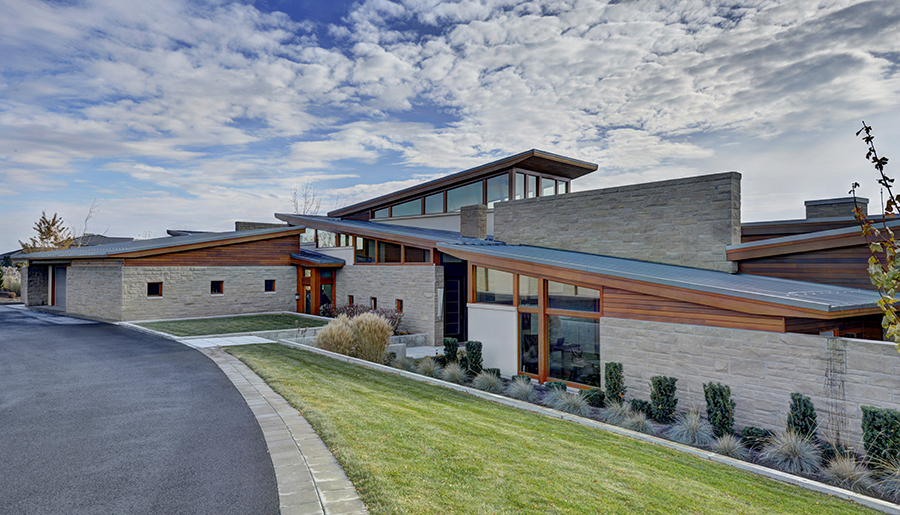Increase comfort and efficiency with the right windows
A building’s envelope is the physical barrier between the interior and exterior environments. It includes all of the elements that contribute to keeping conditioned indoor spaces dry and comfortable. When thinking about the envelope, the first things that come to mind are the roof, walls, foundation, insulation, and assorted types of waterproofing. However, it’s also important to consider how critical windows are for the durability, energy efficiency, healthiness, and livability of a building. Beyond providing natural light, windows have a central role in keeping moisture, air, and heat outside or inside of the building—depending on the season.
Heat
There are three ways that heat energy is transferred from a warm place to a cool place: radiation (sunlight), convection (hot air movement), and conduction (heat transferred through materials). R-values indicate how effective the insulation and building materials are at controlling heat transfer through the solid structural parts of a building, such as the roof and exterior walls.
For windows and patio doors, heat-transfer performance is measured by U-factor. The lower the U-factor value, the better the window is at minimizing heat transfer. Modern windows employ several materials and design advances to offer better U-factor values than older windows.
- Low-E glass coatings: Very thin, transparent metallic coatings on panes that help reduce solar heat gain by reflecting infrared light coming from the sun.
- Insulating glass: Air or inert argon gas sealed between multiple panes of glass provide invisible insulation that helps reduce the conduction of heat through the window glass.
- Nonmetallic frame materials: Wood and vinyl windows conduct less heat than aluminum or other metal windows.
- Improved manufacturing techniques: Today’s windows are extremely airtight, preventing drafts and convection of warm or cold air.
Moisture
Modern windows are designed and manufactured to be highly effective at sealing out precipitation and humidity. When water infiltration and moisture problems occur, it’s most often due to improper installation. The building envelope’s integrity depends on following the window manufacturer’s installation instructions and properly installing the flashing system, substrates, caulking, and sealants specified by the manufacturer.

Air
Properly installed modern windows are also excellent at sealing the building envelope against air drafts and heat convection. While this greatly improves climate control energy efficiency, it’s worth noting that it also makes it harder for unwanted moisture to get out of the building and for fresh air to get in. To ensure the occupants’ health and comfort , the HVAC system should be designed to deliver the recommended number of air changes per hour (ACH) for the space and to vent moist air out of the building.
Performance certifications
In North America, two sets of standards simplify identifying windows that will help create a high-performing building envelope.
The American Architectural Manufacturers Association (AAMA), the Window and Door Manufacturers Association (WDMA), and the Canadian Standards Association (CSA) jointly publish the AAMA/WDMA/CSA 101/I.S.2/A440 North American Fenestration Standard (NAFS). The NAFS provides overall performance ratings and defines window products by performance class and grade. Independent testing laboratories certify the window for structural, air, water, operating force, and forced-entry resistance performance. For energy efficiency performance certification, the Energy Star program, created by US Environmental Protection Agency, is the leading program.
When it comes to building homes that provide maximum comfort, durability, and energy efficiency, choosing the right windows and installing them properly helps ensure the integrity of the building’s envelope. For help discovering the windows that create the best envelope for your customers’ homes, visit JELD-WEN’s professional portal.



